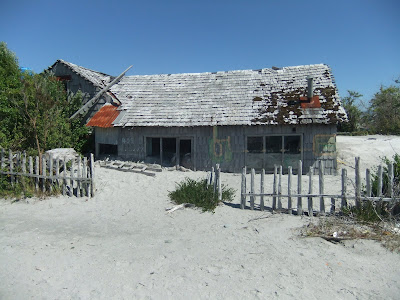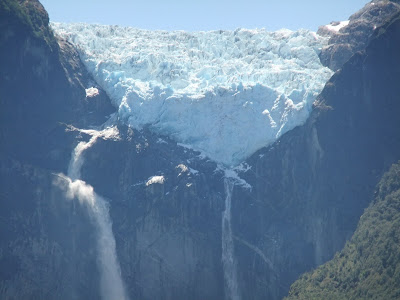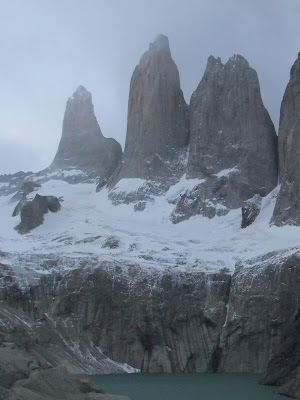




So after Torres del Paine, I set off from the group for a little solo travel. This was something my adventurous self was looking forward to all semester. The first stop was the Argentinian town of El Calafate, famous for it's proximity to the Perito Moreno Glacier. So I was on my own here, excited about not having to balance my schedule and what I wanted to do with anyone else as well as the chance to meet a ton of new people. Well what do you know, I run into 7 friends from La Universidad Catolica! They were visiting the glacier before going to Torres del Paine and I decided to head out the next morning with them to check out the glacier. Incredible! The glacier itself isn't all that big in relation of many other glaciers in Patagonia, but it is unique because of how close you can get to it. Standing on a series of walkways on the shore, you can watch chunks of the glacier fall off and shatter into the water or on top of other ice. It's an incredible sight but an even more incredible sound. The glacier is also famous for it's occasional "rupture," where it has partially dammed the lake and the building pressure leads to what I assume is an insane explosion. I didn't get to see it, but check out minute 2:15 of this video
http://www.youtube.com/watch?v=dXsJJKSpBH8
As for the rest of El Calafate, it is very touristy, but set on the shore of Lago Argentino, the largest lake in Argentina. Like most other Patagonian lakes, it exhibits a beautiful turquoise color. I was also lucky enough to get the very last bus ticket out of El Calafate for Puerto Natales in a span of 3 days! This was hugely important because I had a boat to catch.
This boat was something special. Earlier in the semester, after reading through my trusty Lonely Planet guidebook, I found something that really caught my attention. The company Navimag ran 4 day tours on an old converted shipping freighter through the Patagonian fjords. When I say converted, I don't mean completely converted. Our ship was still predominantly a shipping freighter, carrying semi trucks, personal cars, live sheep and cows, and who knows what else. The upper decks had been converted to modest bedrooms and a simple cafeteria. The trip was absolutely amazing, despite the poor weather. I met a ton of other travelers from all over the world and found that speaking English as a native language is both a blessing and a curse. On one hand, I rarely got a chance to practice my Spanish while travelling around here because nearly every European traveler is more comfortable speaking English than they are Spanish. Yet on the other hand, it is convenient to be able to communicate with everyone in your native language.
While most of the boat trip was through the calm waters of the fjords, in order to make it to Puerto Montt, our destination farther North, we did have to brave the open Pacific Ocean for 14 hours. The crew warned us about getting seasick and recommended that we take medication if we were prone to seasickness. Having never really experience the rough ocean, I thought I'd ride this one out and see how I felt. This was part stubborn arrogance, but also part curiosity. How was I to ever learn if I'm prone to seasickness if I never actually try it. I think you know where this is going. Despite my best efforts, I did get seasick and ended up puking over the side of the boat (The crew called this "feeding the dolphins" if you want to use your imagination). The next night, our final night on-board, after a good night's rest and recovery, we had bingo night and a dance. This was a lot of fun, and dancing on a moving ship (albeit less than the night before) is a unique experience. We landed the next morning in Puerto Montt.
Patagonia was simply amazing, far and away my favorite part of Chile. The landscape is breathtaking, the sights are almost unending, and the weather is pretty awful (but exciting!). It was certainly a different experience than most other parts of Chile, especially Santiago. Unlike the capital, tourists from around the world flood to Patagonia. I met Russians, Frenchies, Finns, Aussies, and just about anyone else you could think of. The highest concentrations of tourists were definitely from Germany, Switzerland, and Israel. Most are travelling for independently several months and often have plans to visit most of South America and then move on to South-East Asia. Their plans made me pretty jealous, but I'll have other chances to travel.








































